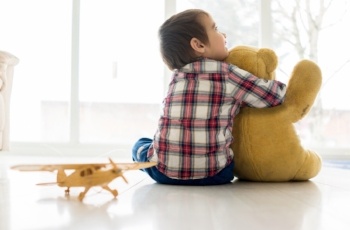 Although we still do not know the specific causes of autism, we do know one thing. The rate is increasing, and the market for treatment is growing.
Although we still do not know the specific causes of autism, we do know one thing. The rate is increasing, and the market for treatment is growing.
Based on new government data, 1 in 45 children in the United States, aged 3-17, have autism. This is up from only 1 in 150 children back in 2000.
Marketdata analysts estimate that there are 1.4 million American children with autism. Another 700,000 adults have autism, having “aged out” of children’s programs. And, 81% of autistic children are male.
The total annual costs for children with ASD (autism spectrum disorder) in the United States were estimated to be between $11.5 billion and $60.9 billion — a significant economic burden.
Insurance coverage is a problem, but the share of children with access to insurance coverage is expected to increase from the 36% level today. In addition, the number of self-funded private employers covering autism treatment continues to grow.
Autism Treatment Options
In the past, it was thought that the best way to treat the symptoms of autism was to medicate. Data suggest that approximately 58 percent of patients with a diagnosis of childhood autism receive some type of pharmaceutical treatment. However, this segment of the market has been shrinking in value as concerns continue over the side effects of commonly used drugs such as Risperdal.
Today, this attitude is changing, as ABA (Applied Behavior Analysis) programs have become more widespread and have displayed good outcomes. There are basically three types of ABA program providers: brick & mortar centers, community providers, and In-home therapists.
Many autism treatment organizations, and some of the largest competitors, are located in California. This is due to the fact that funding for treatment programs has been in place there since the 1990s, prior to the insurance mandates that were later put into place.
The Market Opportunity
The U.S. autism treatment market was estimated to be valued at $1.85 billion as of 2016, growing to $1.87 billion last year. Marketdata forecasts 3.9% average yearly growth, to $2.23 billion by 2022. This could be conservative, as insurance coverage is improving. In addition, venture capital firms are starting to take notice of investment opportunities in this market.
The “average” ABA center grosses about $821,000, and many are non-profit organizations. Many programs now have waiting lists and there is a shortage of qualified supervisors.
Nine large multi-site ABA program providers operate an estimated 296 brick & mortar centers and employ thousands of therapists. Together, they account for about $390 million in revenues — a 38% market share of ABA programs.
Revenues of ABA (applied behavioral analysis) programs are estimated to generate $1.07 billion in revenues this year, outpacing sales of prescription drugs used for autism symptoms.
NEW UPDATE: For the most up-to-date research, see Marketdata's newest article on the $4 billion U.S. autism market, which draws on research from the report The U.S. Autism Treatment Centers Market.
About the Author: John LaRosa is the President of Marketdata LLC and is the author of 100+ industry and market studies. His research appears in top media outlets including ABC, CNN, Fox, Forbes, USA Today, The Wall Street Journal, The New York Times, and a variety of trade journals.

